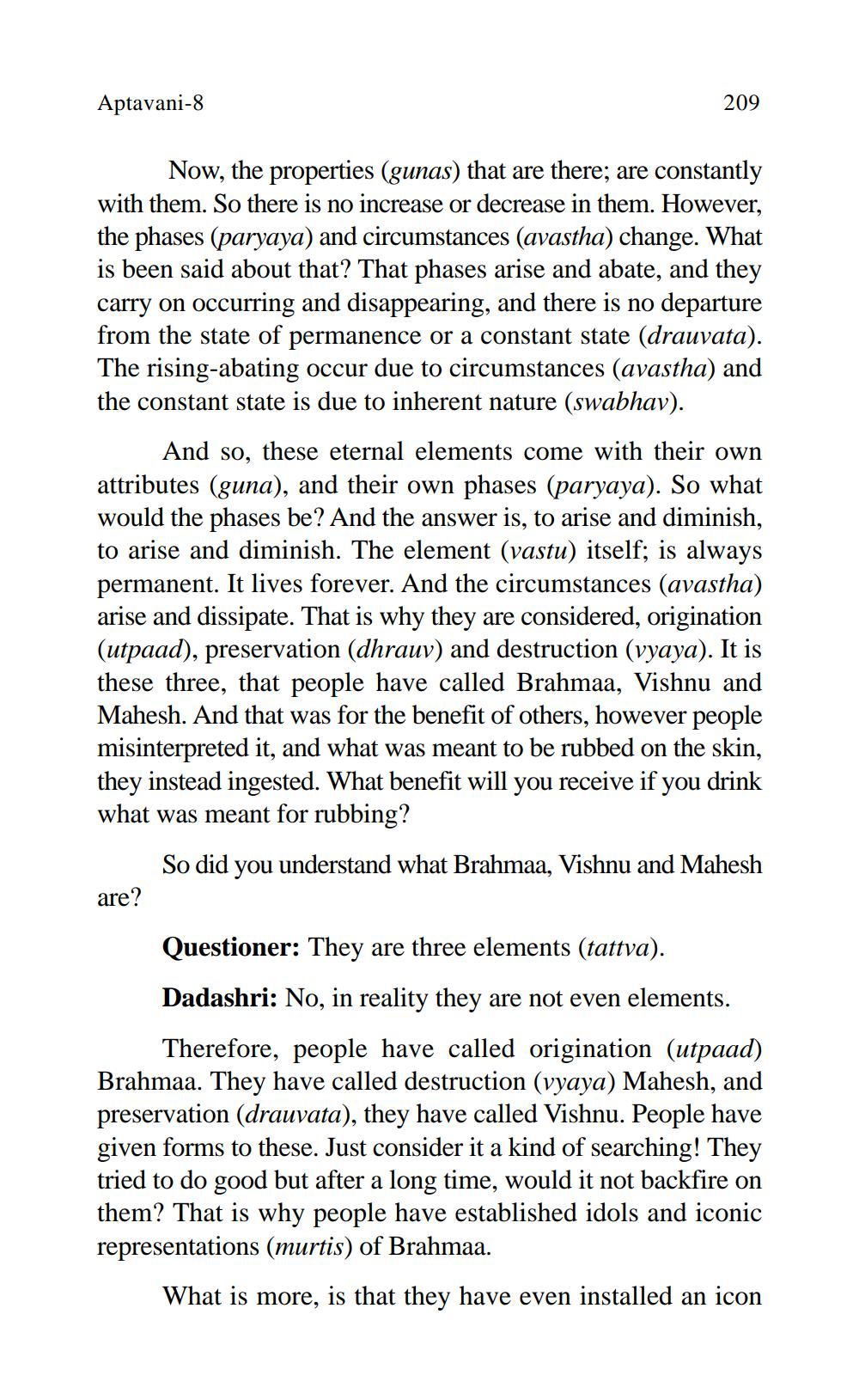________________
Aptavani-8
209
Now, the properties (gunas) that are there; are constantly with them. So there is no increase or decrease in them. However, the phases (paryaya) and circumstances (avastha) change. What is been said about that? That phases arise and abate, and they carry on occurring and disappearing, and there is no departure from the state of permanence or a constant state (drauvata). The rising-abating occur due to circumstances (avastha) and the constant state is due to inherent nature (swabhav).
And so, these eternal elements come with their own attributes (guna), and their own phases (paryaya). So what would the phases be? And the answer is, to arise and diminish, to arise and diminish. The element (vastu) itself; is always permanent. It lives forever. And the circumstances (avastha) arise and dissipate. That is why they are considered, origination (utpaad), preservation (dhrauv) and destruction (vyaya). It is these three, that people have called Brahmaa, Vishnu and Mahesh. And that was for the benefit of others, however people misinterpreted it, and what was meant to be rubbed on the skin, they instead ingested. What benefit will you receive if you drink what was meant for rubbing?
So did you understand what Brahmaa, Vishnu and Mahesh
are?
Questioner: They are three elements (tattva).
Dadashri: No, in reality they are not even elements.
Therefore, people have called origination (utpaad) Brahmaa. They have called destruction (vyaya) Mahesh, and preservation (drauvata), they have called Vishnu. People have given forms to these. Just consider it a kind of searching! They tried to do good but after a long time, would it not backfire on them? That is why people have established idols and iconic representations (murtis) of Brahmaa.
What is more, is that they have even installed an icon




